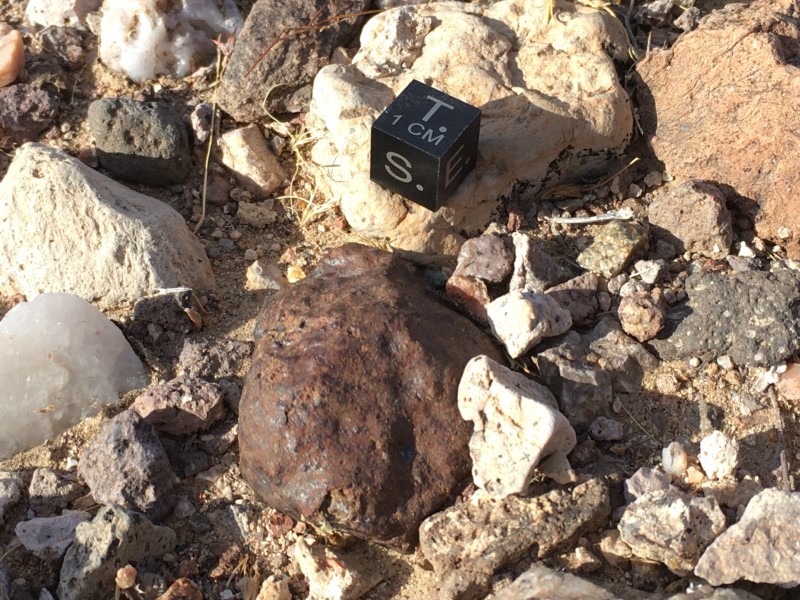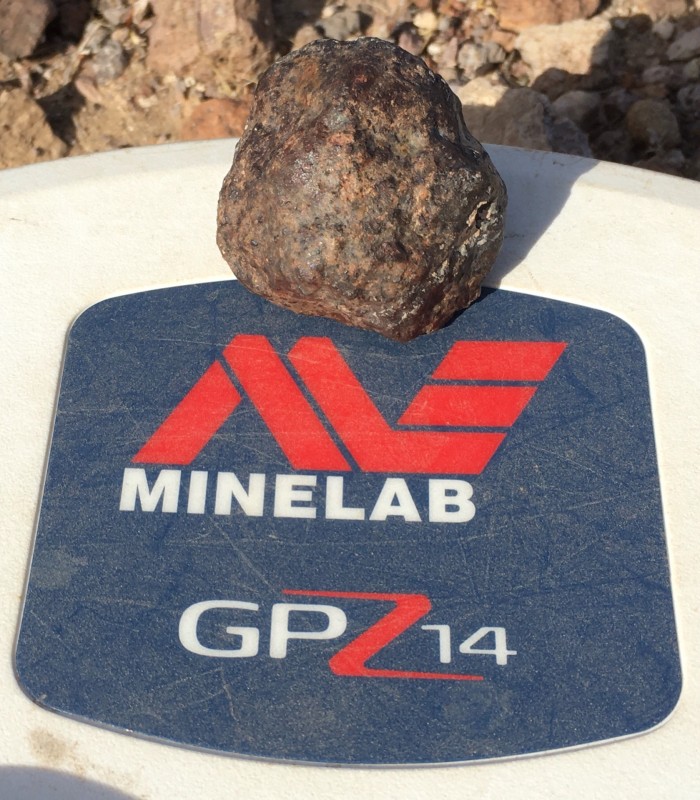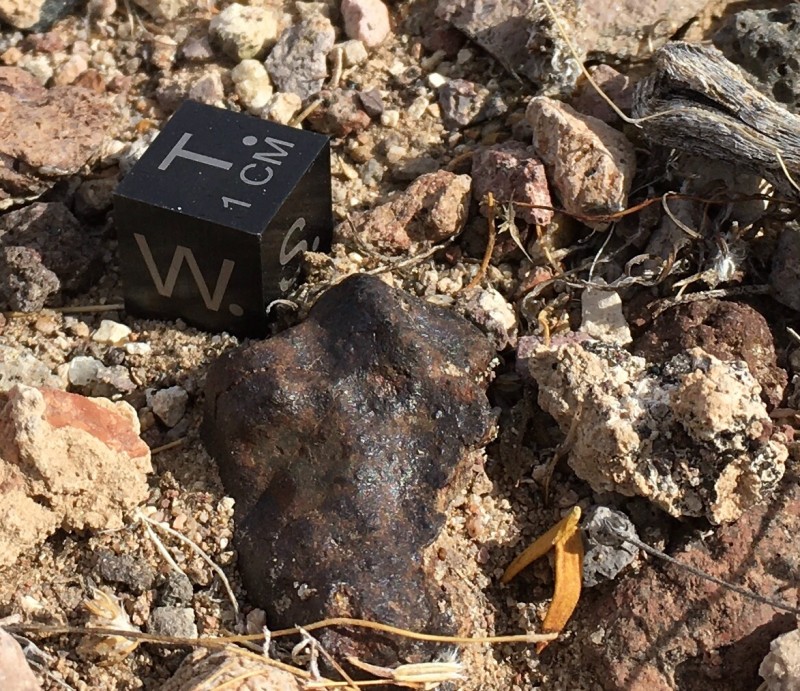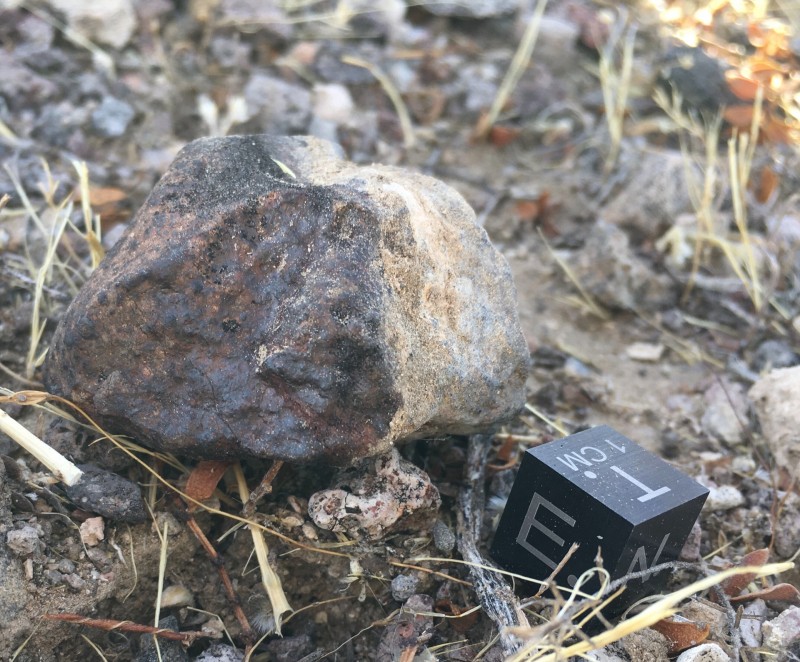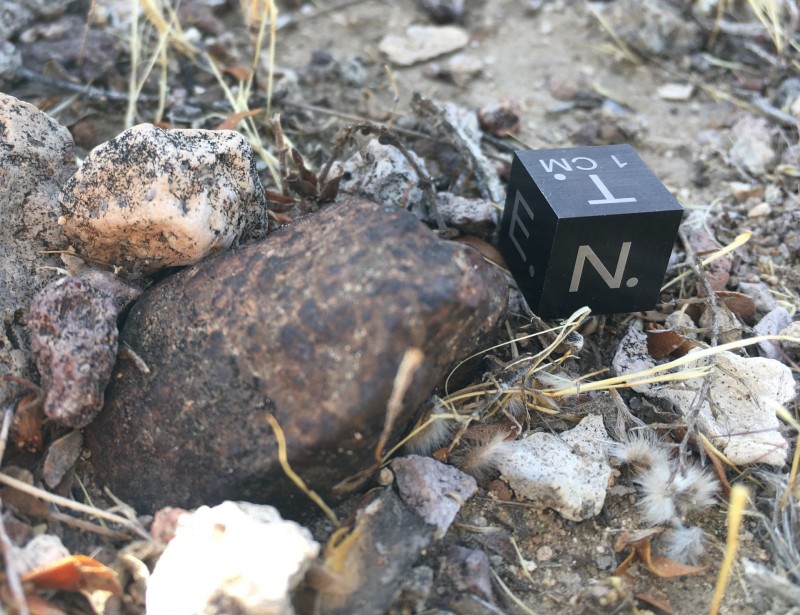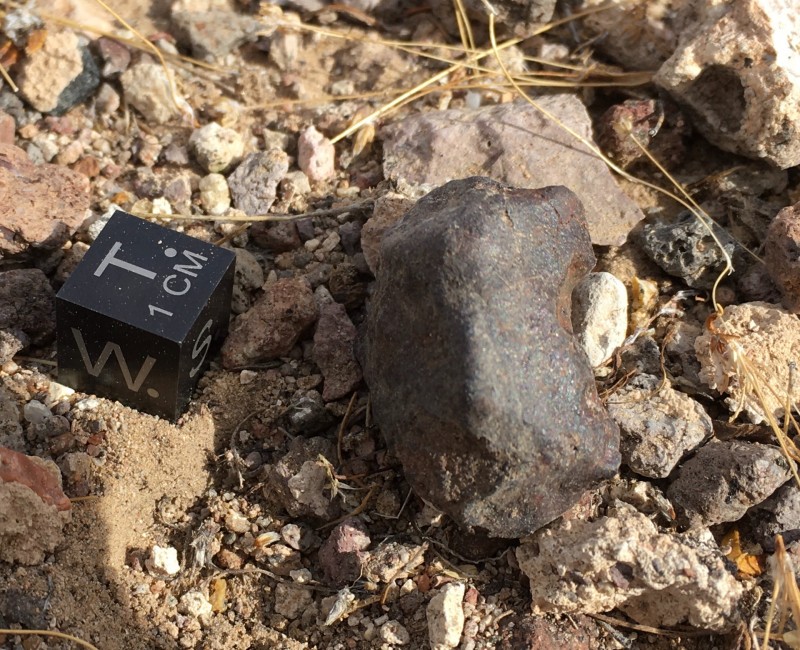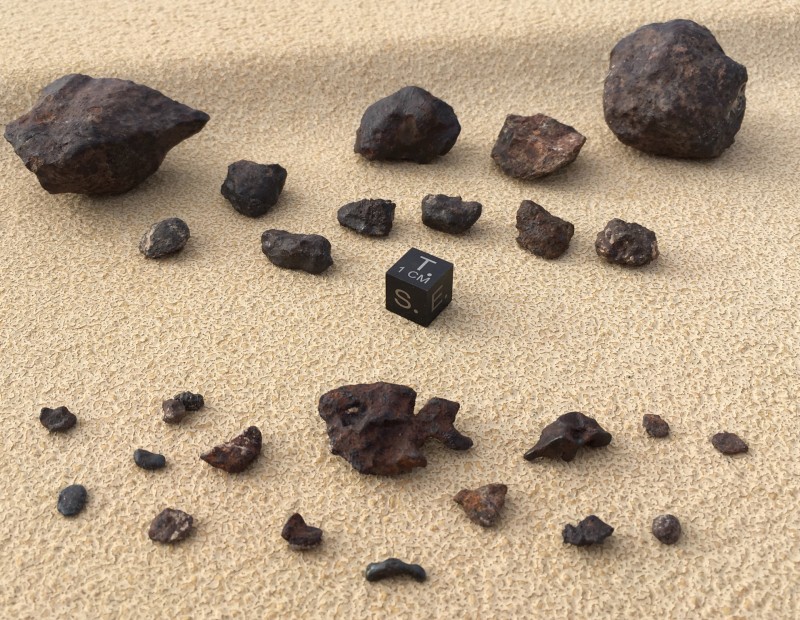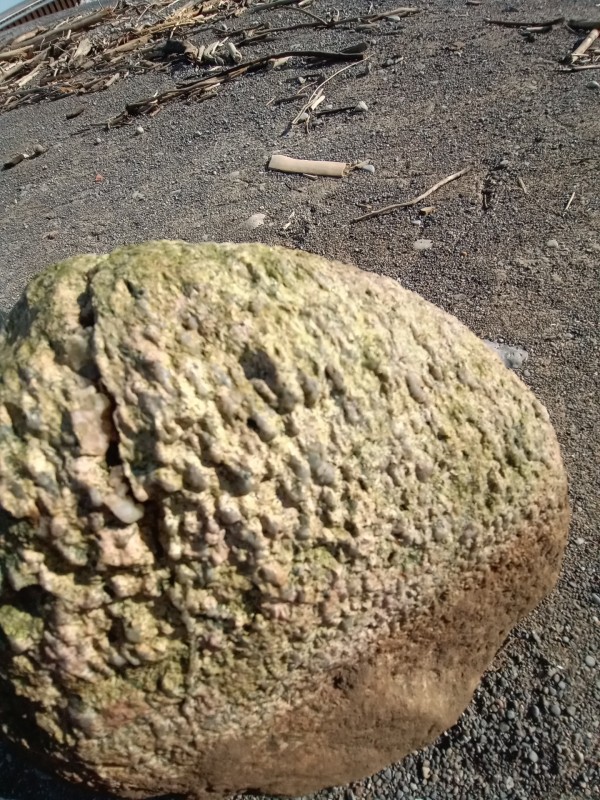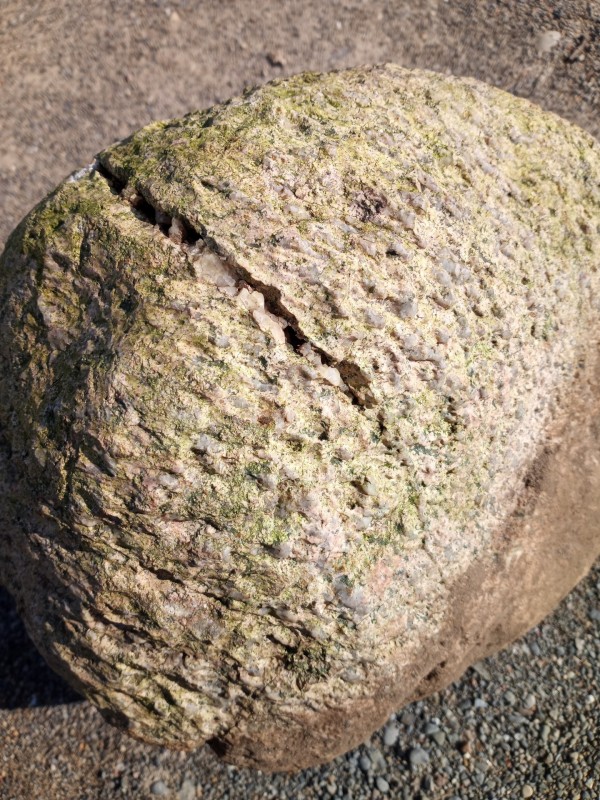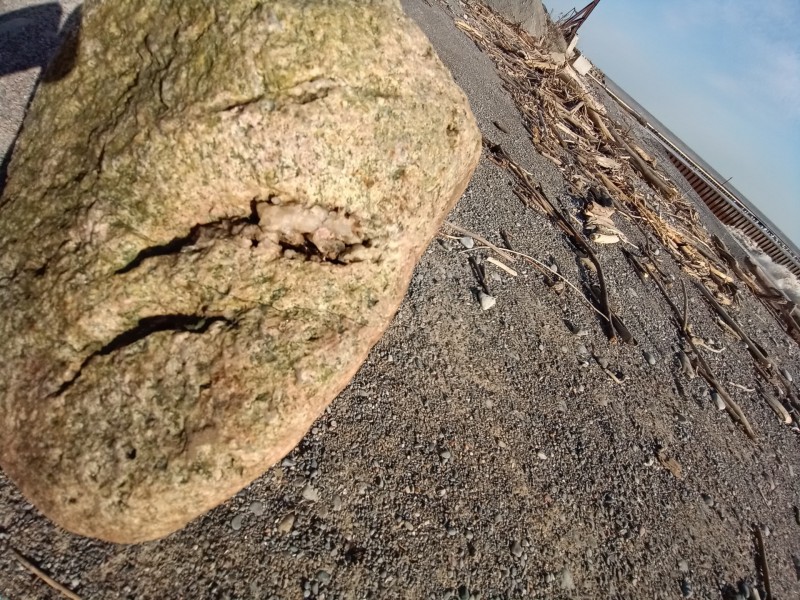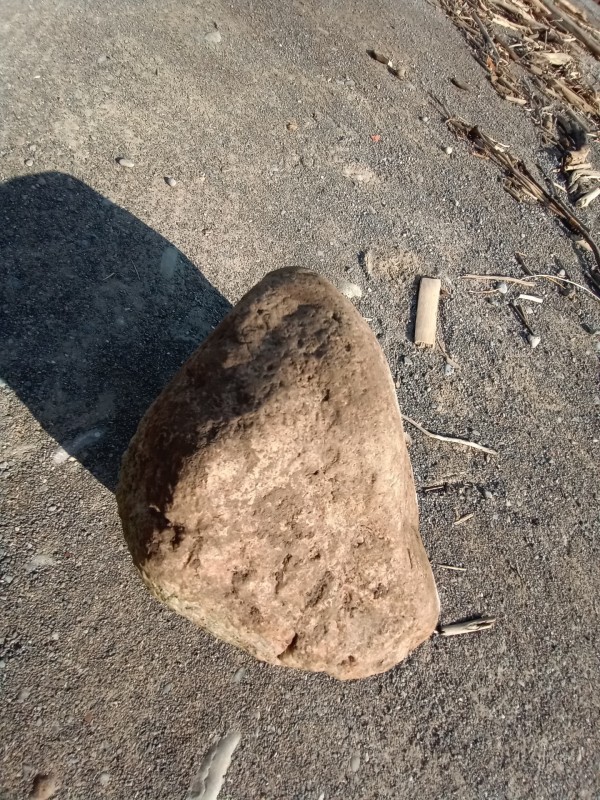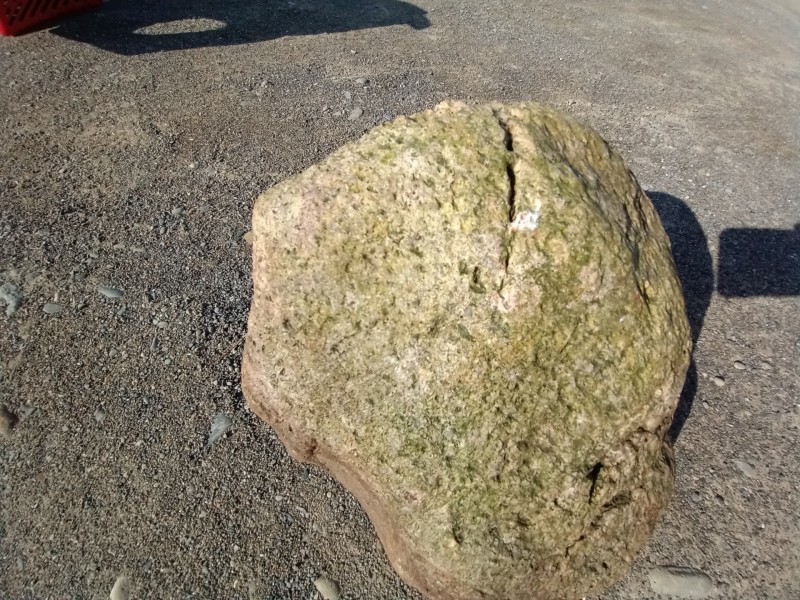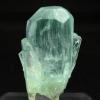Search the Community
Showing results for tags 'meteorites'.
-
What was the last meteorite found in the USA Mainland? How 'bout worldwide? 'Falling Stars' are visible every evening somewhere on this planet I would think, but finding them is something else of course. I used to watch Meteorite Men on the Science Channel years back. What were those cats names? Gregory maybe and one other guy. It always interest me . . . how meteorites were located and hopefully found. I remember one they found that was huge like maybe 3' in diameter. It wasn't from a recent fireball that someone saw falling. I always wondered why they were looking on this particular large farm & pasture land? It was like 6' deep. I think they were using a custom 2-box detector on wheels. It lay along the side of a long fence line. Did anyone see that particular Meteorite Men? Anyways meteorites are cool! Later, Billy
-
The 6000 coaxed another meteorite out of Gold Basin, this is the largest I’ve found and reminds me of a chocolate brownie. It was baked and left at the edge of a shrub the two pieces that fit like a puzzle to the meteoritic brownie found near by. this was an aluminum can loud signal a 1” boot scrape made it even louder, a couple quick scrapes with my pick pulled a dense heavy rock out from about 4 inches down.
-
I have been pretty consistent finding a few meteorites hunting the gold basin placers lately, nice finding something in between finding a nugget. I’m averaging at least a tiny piece of gold maybe about 75% of the time most of these have been shallow 3” down or less and ring strong out on the 6000 like a large caliber bullet on the surface, they are a great motivator to dig all the trash sounding targets because they sound just the same.
-
Hi Guys, Found a possible meteorite near Coolgardie (West Australia) last Friday. I'm in the process of getting an authority to either confirm or decline it as a proper meteorite. I've had two agencies reply so far who are quite confident its the real deal and the most likely candidate is a 'H Chondrite'. It was found while I was gold detecting and produced a very strong signal on my Minelab 7000. Depth about 200mm. No other ironstones or hot-rocks in the area. Very quiet ground. Fingers crossed! Anyway, it was gently extracted with my plastic scoop in easy digging soil and came as 5 separate fragments that I managed to make fit together back home once I washed all the soil of them pretty nicely! Went together like a jigsaw! Here's some pictures. Cheers folks. Jim.
-
It was a 1 in 100 billion chance but ... https://www.nytimes.com/2021/10/14/world/canada/meteorite-bed.html
-
Good morning! Hoping for a little help with this rock. I found it with my Excal in the Boise river(South West Idaho). It was a faint dull sound with the Excal so I picked it up and tossed it in the bag hoping for some gold after I rinsed the sand off later. No signs of gold, but it is quite odd. Got the Equinox out at home and it reads -6 to -8 but faint. Maybe a meteorite of sorts? It was in an area of the river that has a fairly strong constant flow. Approximately 58g and 6cm x 3.5 cm x 2cm height. Appreciate any help!
-
You can buy it this month at auction. https://www.bonhams.com/auctions/27190/lot/11/
-
Today found me deep in the Nevada outback, searching for those elusive gold nuggets with my trusty Minelab GPZ 7000. Towards the end of the day, I heard a nice, narrow double target response from the detector, just like the small and shallow sub-gram nuggets make. After pinpointing the target with the edge of the GPZ 14 coil, I plunged my plastic scoop into the loose soil, where it encountered a rock about 3 or 4 inches deep. Removing it from the soil, I immediately noticed that the rock was unusually dense; rubbing the dirt from the stone revealed the familiar rusty tin can color and smooth, regmaglypted surface typical of a weathered chondrite. The stone meteorite had a couple of broken surfaces, so I carefully searched the area with the detector for more fragments and soon received another double target response that turned out to be another stone of about the same size and depth as the first, and around 8 feet downslope. The two fragments fit together perfectly, just like a jigsaw puzzle. This meteorite is my third Nevada cold find since 2008. Area where the two chondrite fragments were dug, one at just 3 o'clock of the detector coil, and the other at the tip of the scoop handle: The two fragments reunited, with a total mass of 276 grams:
-
I need help identifying this rock please. I found this around Louisiana a few weeks back. To me it looks like raw Platinum or an ore maybe. I’m not really good at this yet haha. It’s not magnetic at all, it’s weight is 3.7 grams, and it’s streak is too hard to get, as it only scratches the plate. So possibly even a meteorite? Idk heh. Thanks you!!
- 4 replies
-
- gold found
- meteorites
-
(and 1 more)
Tagged with:
-
A meteorite is tracked back to its beginning with the help of a sky camera! https://www.livescience.com/meteorites-botswana-from-vesta-originally.html?utm_source=Selligent&utm_medium=email&utm_campaign=LVS_newsletter&utm_content=LVS_newsletter+&utm_term=6578252&m_i=owCgqp5L9ntOMytAIIbJqm02cPRvhR40QaCjx5_rvwsSDtxaYE85ZhrzKKAZJxC6CO6K0WFQcLx9E9YxpvhnpNvFUNP8ktCo%2BQCYz_Zoon
-
Now this is a somewhat subjective category but maybe we can make our own and add others. What do you think is a famous meteorite? I would say Meteor Crater in Arizona. The meteorites in question are actually called Canyon Diablos. Here is a list from LiveScience and it doesn't include Canyon Diablos. https://www.livescience.com/15445-fallen-stars-gallery-famous-meteorites.html
-
Rare meteorite found by gold fossickers sold to Geoscience Australia after lying undiscovered for 4.5 billion years - ABC News https://mobile.abc.net.au/news/2021-03-18/qld-gold-fossickers-sell-meteorite-to-geoscience-australia/100015142
-
There are thousands of meteorites discovered all over the world. Some areas preserve meteorites better than others. The oceans for instance degrade most of them and other climates make it nearly impossible to find them. When they are found they are studied and classified. This meteorite was: A lonely meteorite that landed in the Sahara Desert in 2020 is older than Earth. The primeval space rock is about 4.6 billion years old, and is the oldest known example of magma from space. This meteorite is an achondrite, a type of meteorite that comes from a parent body with a distinct crust and core, and lacks round mineral grains called chondrules, according to the Center for Meteorite Studies at Arizona State University. https://www.livescience.com/meteorite-asteroid-early-solar-system.html
-
Christie's had an auction for meteorites. I read the results and the prices obtained were WAY over the estimates. You can also use these pictures as good meteorite ID photos in case you are wondering 'Do I have a meteorite.' https://onlineonly.christies.com/s/deep-impact-martian-lunar-other-rare-meteorites/lots/2006
-
If you saw a meteor fall from the sky how would you find the meteorite? There are many cameras looking at the sky. A calculation can be made and give an estimate where the strike would happen. This would be the beginning of the trail and then eye witnesses would assist. This is what happened with this iron meteorite in Sweden. https://www.thelocal.se/20210223/meteorite-hunters-find-swedens-first-ever-new-fallen-iron-metoerite
-
This is a really great paper describing how you can use the latest technology (AI) and algorithms to locate meteorites. Now just imagine what else you can find if you have the time and knowledge. There are a few here on this forum who will be enlightened by this article but certainly not surprised. It is just a matter of time that we process massive amounts of data quickly. https://arxiv.org/pdf/2009.13852.pdf
-
- meteorites
- drones
-
(and 1 more)
Tagged with:
-
Looking to get my annual meteorite fix, I recently embarked on a 3-day detecting trip to the famous Franconia meteorite strewn field in the beautiful Mohave desert of sunny Arizona. I arrived at my destination late afternoon and set up camp, which basically just consisted of parking my truck. Following a typical gorgeous desert sunset, the stillness of the night under the sky's star-filled canopy lent itself to the other-worldly ambience of camping in the midst of rocks from space. The following morning found me hiking into the heart of the strewn field, swinging the mighty Zed across a seemingly endless landscape of ridges and washes infested with basalt hot rocks. Undeterred after an half-hour with no targets, I finally received a signal at the base of a ridge that turned out to be a small 4 gram stony meteorite fragment. Slowly working my way upslope proved unsuccessful; that is until I topped the ridge and began hunting the wide, nearly level surface that stretched out before me. As I was skirting around a creosote bush with the detector coil, the GPZ 7000 sounded off with a sharp response. Pinpointing with the edge of the search coil revealed a sizable meteorite looking up at me - a sweet 68 gram beauty! Careful grid searching of the area soon produced another nice stone, this one weighing in at a hefty 53 grams. A few small irons were also unearthed, rounding out a perfect day in the strewn field. Detecting the surrounding area during the next two days netted a nice 13 gram stone, several irons, including a spectacular 8 gram piece (my second largest from Franconia), and numerous small stones and fragments. As always, a thoroughly enjoyable and productive Franconia trip. The total take is pictured below, with 156 grams of stony meteorites (above scale cube} and 14 grams of irons.
-
If you want to look at a daily picture of a meteorite subscribe to this list. http://www.tucsonmeteorites.com/mpodmain.asp?DD=01/03/2021
-
I found this rock years ago and had to hold on to it until I knew more about it. At first sight, I thought this rock was a turtle shell stuck in dried mud. Has crystallized breads on it and they can't be scratched with a utility knife. Vary heavy, the size of a vollyball. Not magnetic. Just wondering if anyone has seen or knows of rocks like this one?
-
A bright green meteor streaked across the southern coast of Tasmania, Australia, and researchers caught the fireball on camera as it broke up over the ocean. The meteor lit up the night sky on Wednesday (Nov. 18) at 9:21 p.m. local Tasmanian time (5:21 a.m. EST and 1021 GMT). A livestream camera on the research vessel Investigator, which is operated by Australia’s national science agency, CSIRO, captured incredible views of the fireball as it descended from space and disintegrated above the Tasman Sea. https://www.space.com/bright-meteor-video-tasman-sea-november-2020.html
-
The police found it! https://www.9news.com.au/national/queensland-police-find-rare-four-billion-year-old-meteorite-five-years-after-it-was-stolen-five-years-ago/29ef3c3a-bec6-4337-af84-31336bbfdc4d
-
Hey everyone... Now weather is getting much better, I got a chance to visit a place I havent been to in a while. Franconia, AZ meteorite strewn field. I met up Saturday morning with a buddy Greg. Greg ended up getting the large complete crusted Chondrite and large iron meteorite on the right, I found the smaller 3 chondrites and irons on the left.... Franconia's always a fun place to visit. A lot of large basalt (hot rocks), .50 cal bullets, .30 cal bullets, wire, ect out there, but after an hour or 2 of adjusting my hearing to the tones, you start to hear the differences between trash and meteorites, ok not 100 % of the time, but Id say over 50% 😉... Dont know about everyone else, but no matter what place I go to new or old, I have to get the good ol hearing adjusted again to the environments, be it gold, meteorites, coins, relics, ect..... See ya in the field, Dave
-
My daily wake up includes a trip to spaceweather.com as well as here and news sites. Today they had a rather cool article and video or a meteor explosion in China I thought to transcribe here and share 🙂 Article from Spaceweather.com and link to video from their gallery *they have a lot of cool stuff there* : AN EXPLOSION OVER CHINA: Every night, the Chinese Meteor Monitoring Organization (CMMO) runs an automated camera in Shandong Province, monitoring meteor activity above the coast of the Yellow Sea. On Aug. 16th, it caught the brightest fireball in years. The night sky turned blue when a space rock exploded hundreds of times brighter than a full Moon: "The meteor illuminated the whole earth and shook the landscape with a loud sound," reports CMMO staff member Zhou Kun. "The flash of light, which peaked at 22:59 pm local time, was widely observed across the Shandong and Jiangsu provinces of China." Kun estimates the astronomical magnitude of the flash to be -20, more than 900 times brighter than a full Moon (albeit not as bright as the sun). If so, that would make it a rare fireball indeed. According to a NASA computer model of Earth's meteoroid environment, a fireball of that magnitude could be a decade class event. More information about this event (including a possible meteorite debris zone) may become available as the CMMO team analyzes "a large number of eye-witness reports," says Kun. Stay tuned. https://spaceweathergallery.com/indiv_upload.php?upload_id=167571

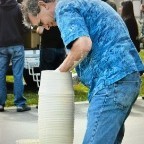
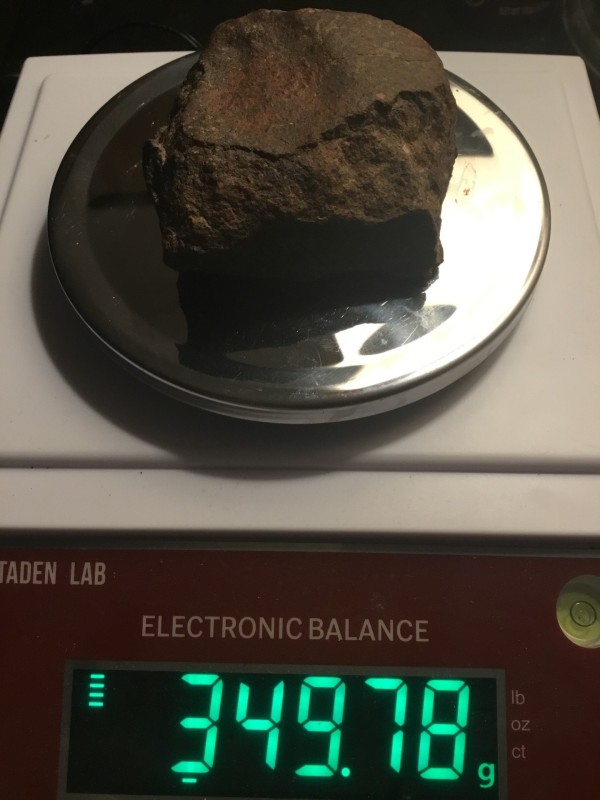
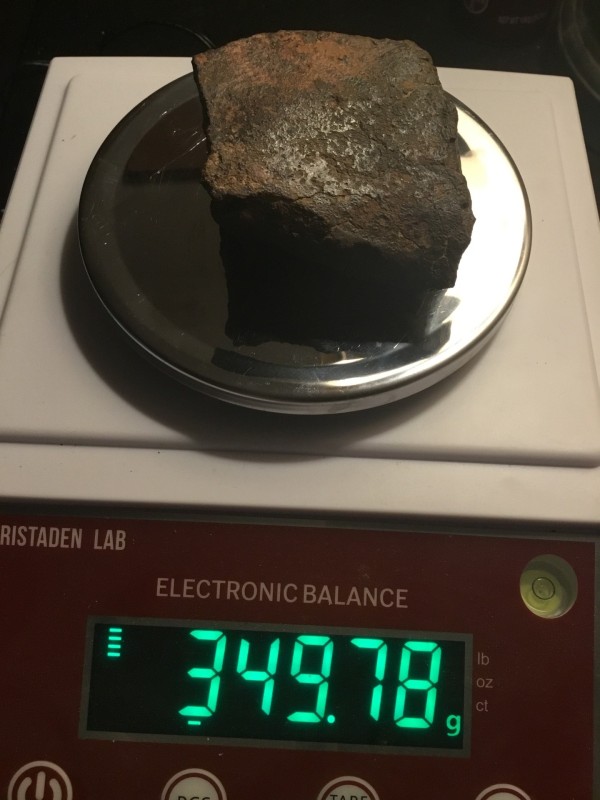
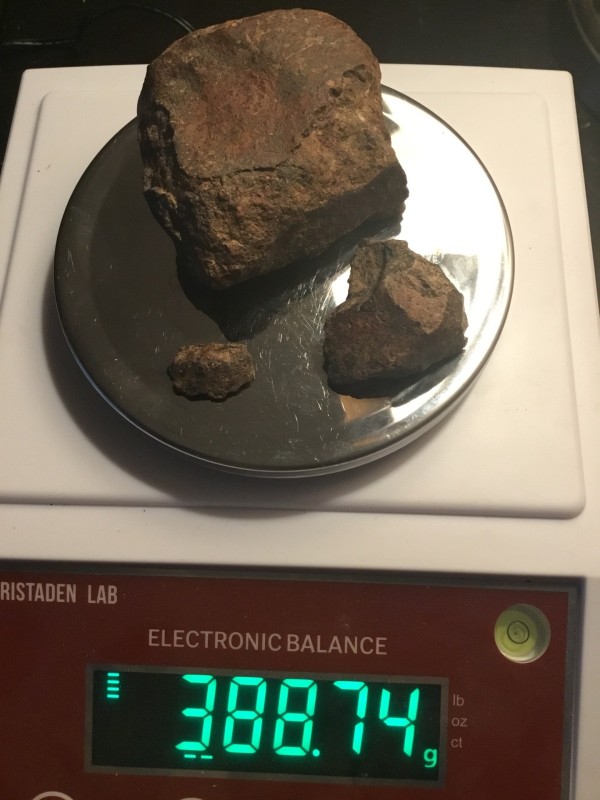
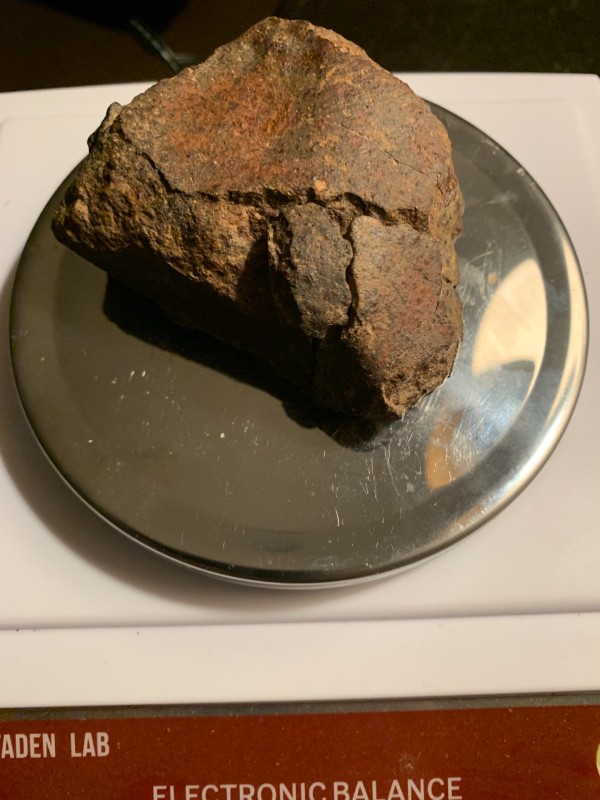
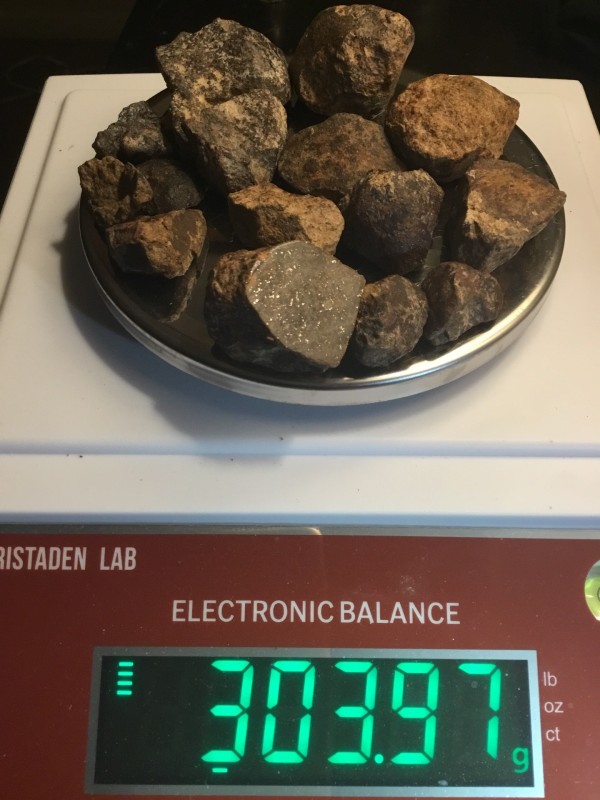

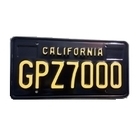
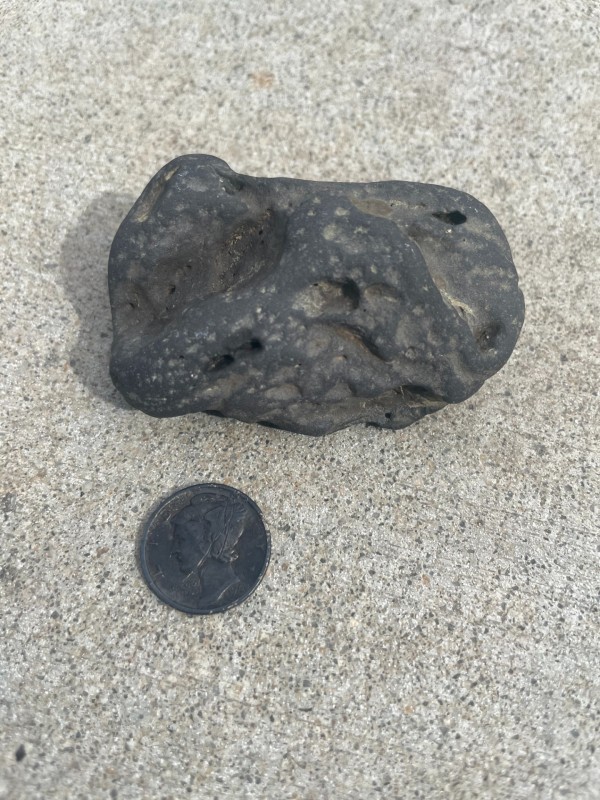
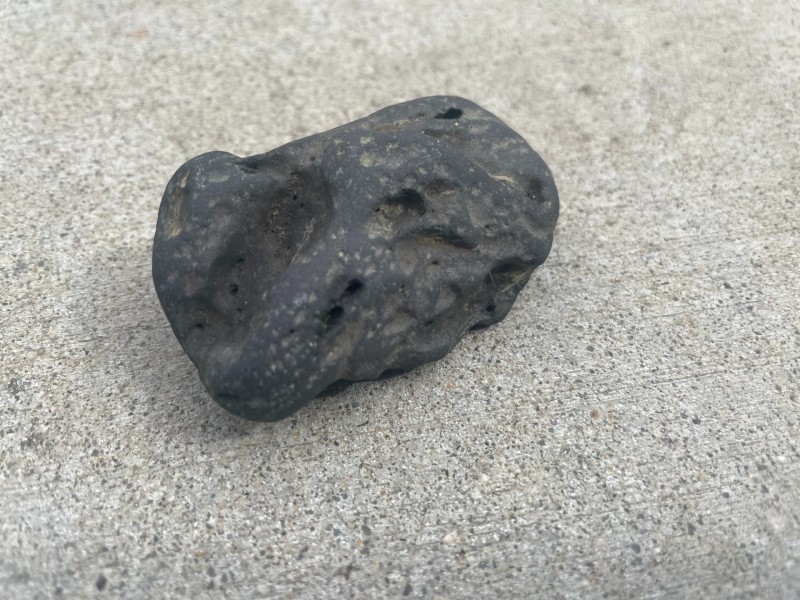
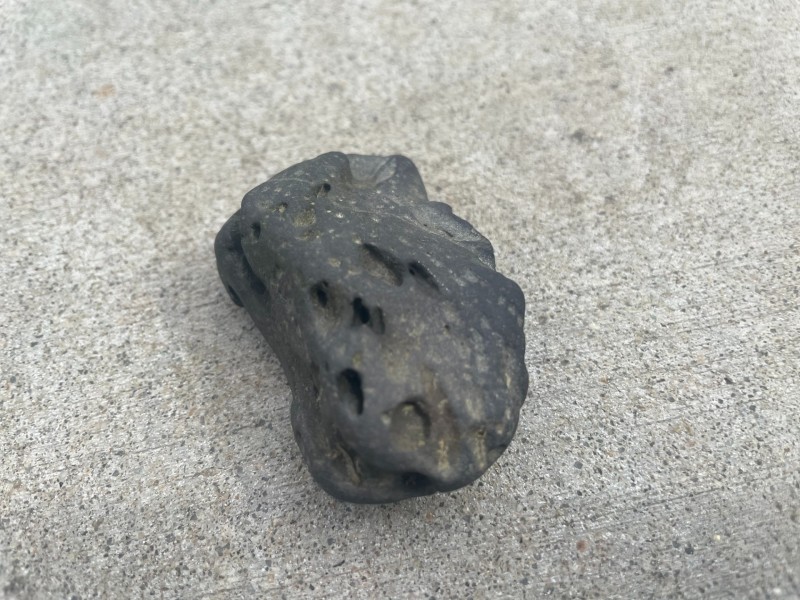

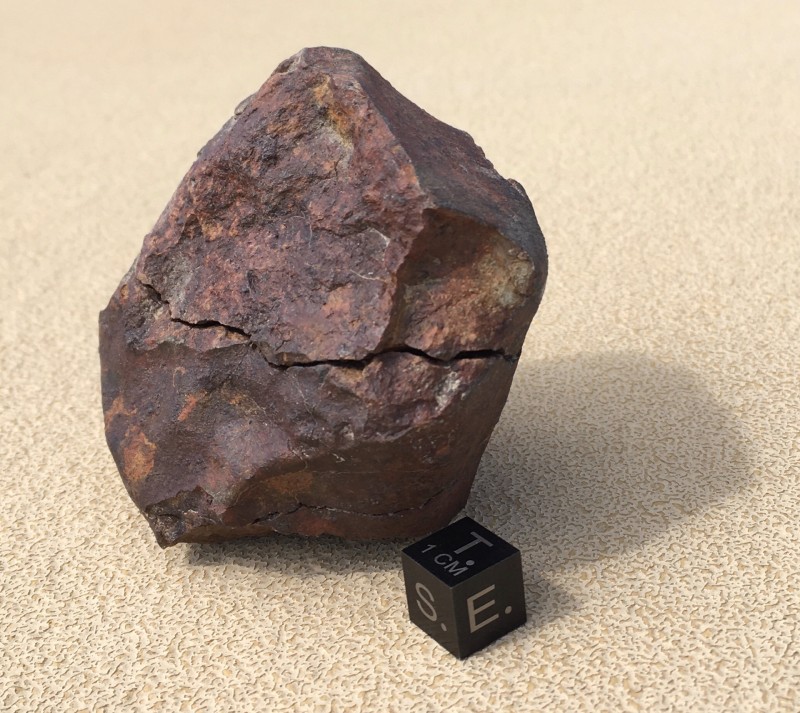
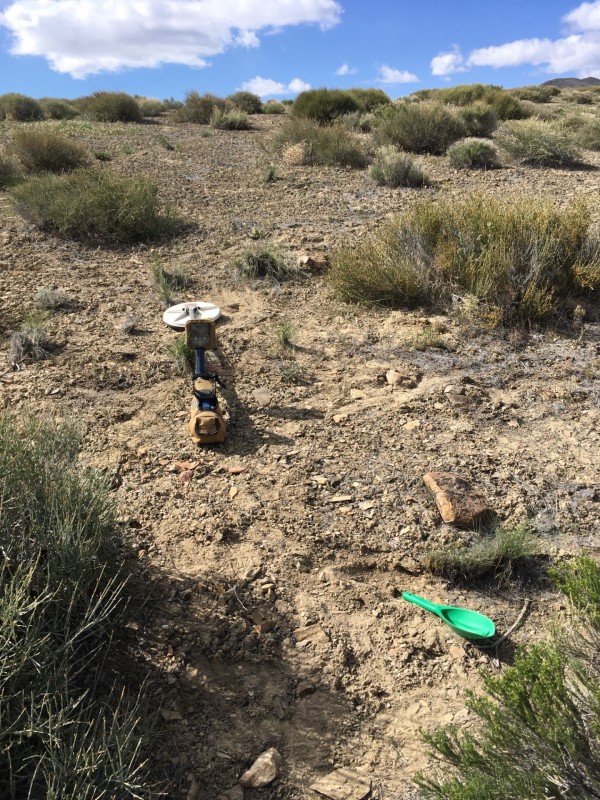

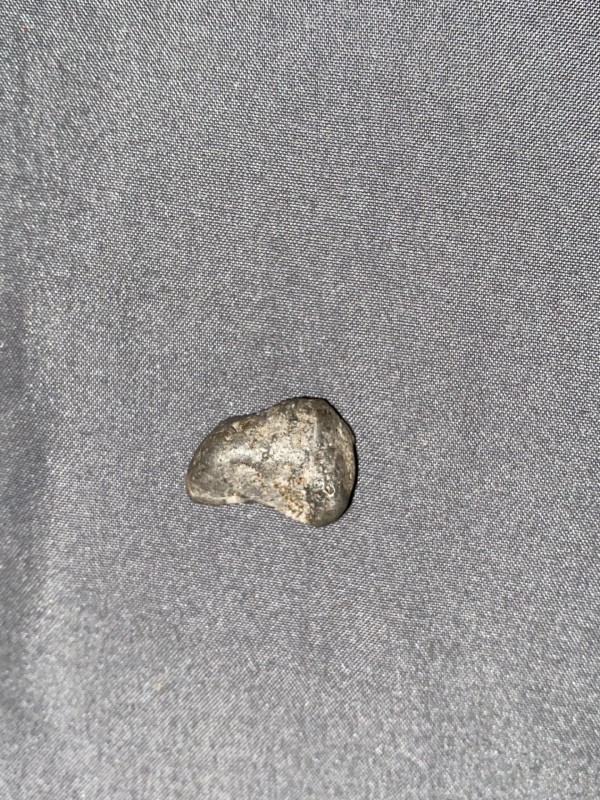
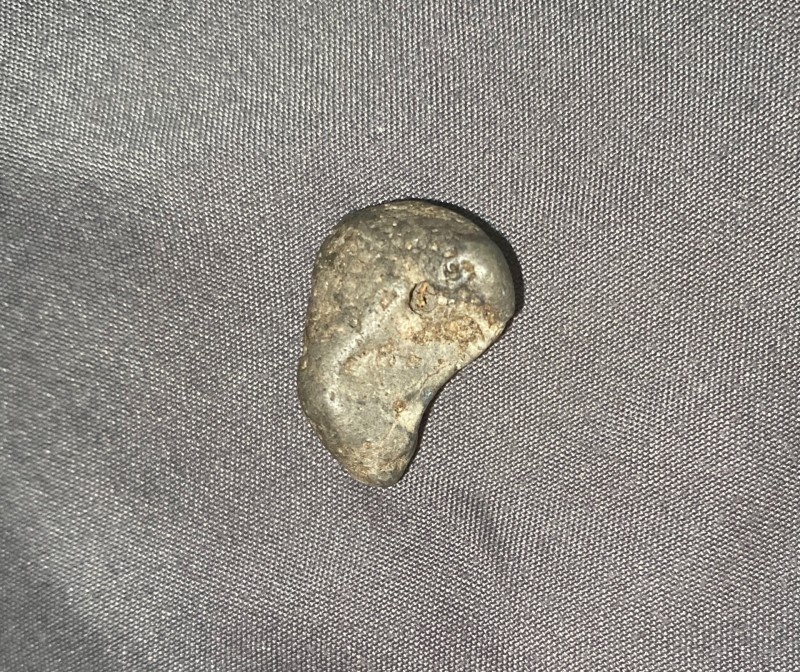
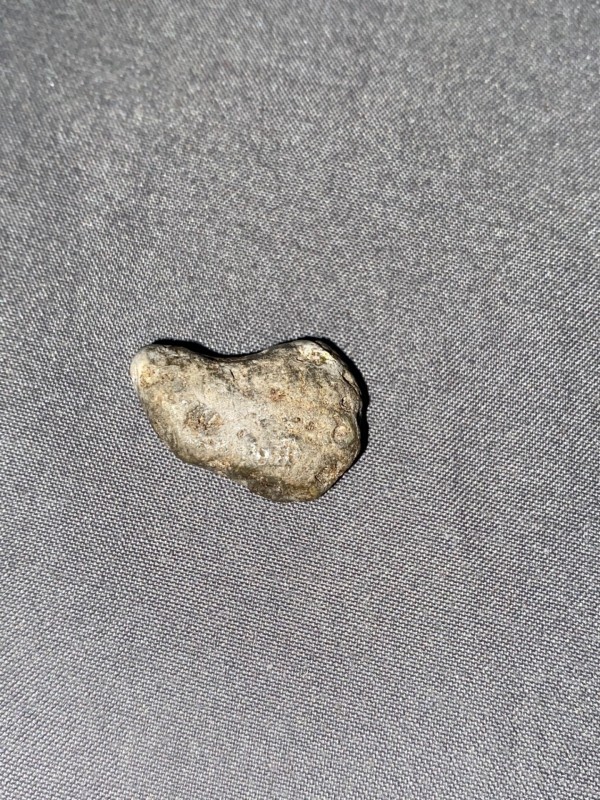
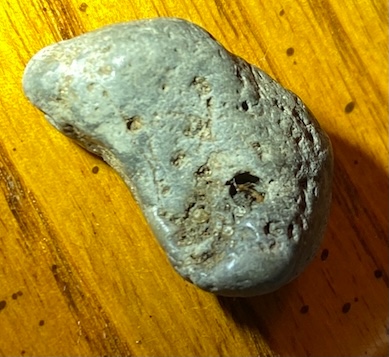
.thumb.jpg.77e4cb5bf39d44bdd2050d2edb7dfdb1.jpg)
